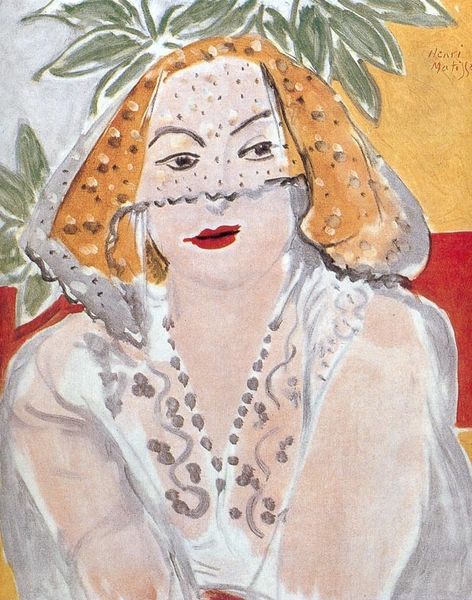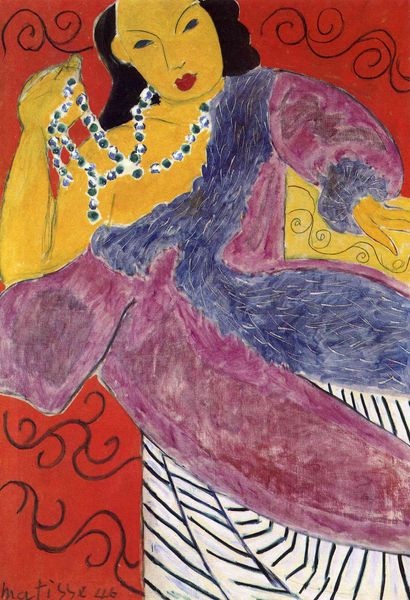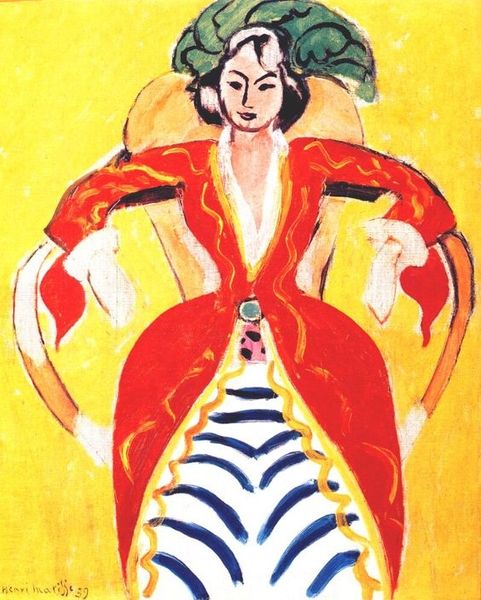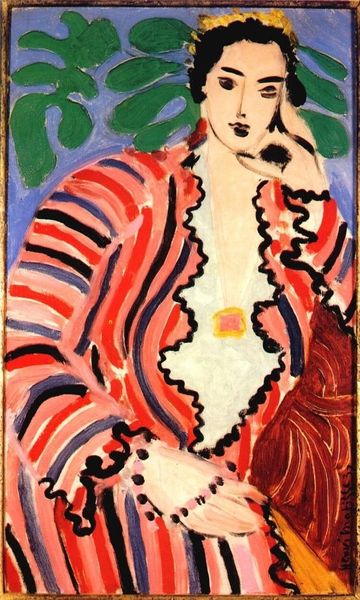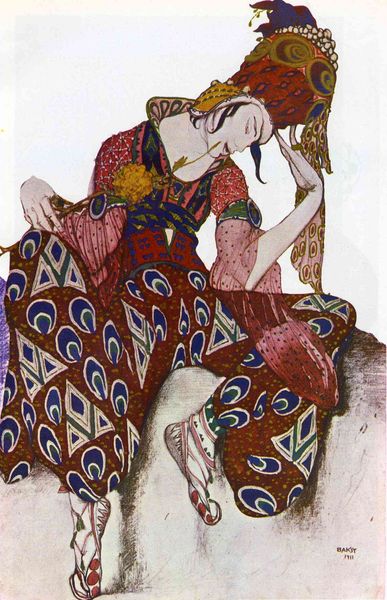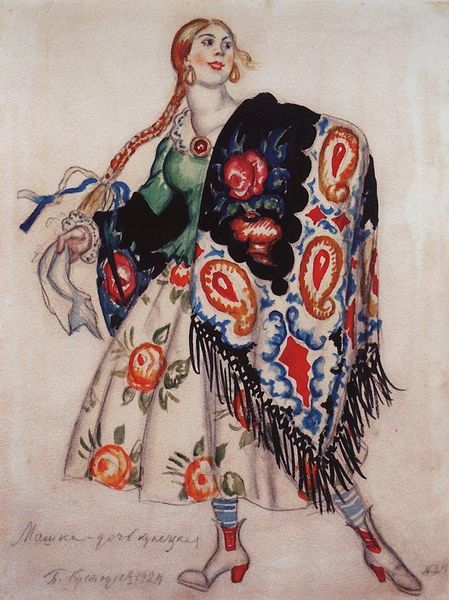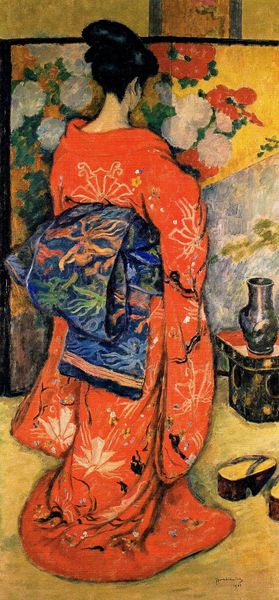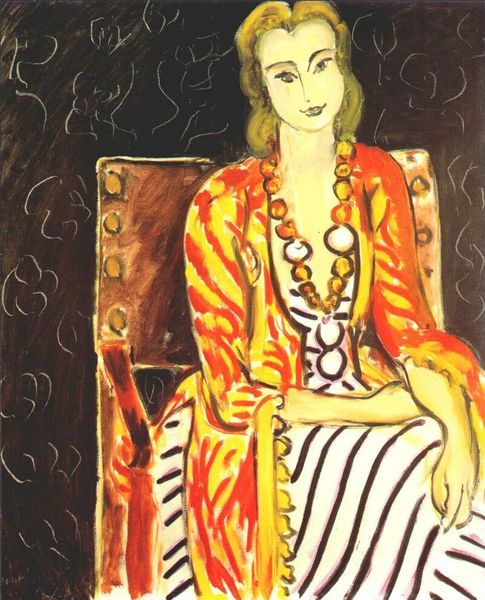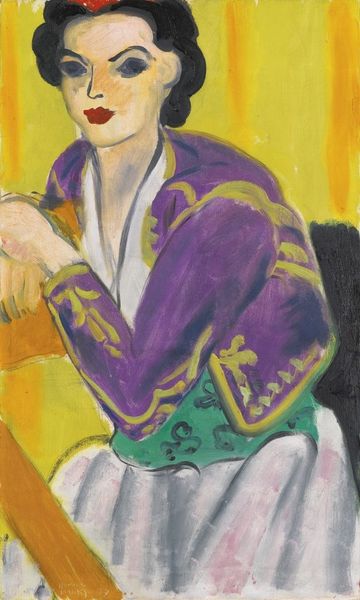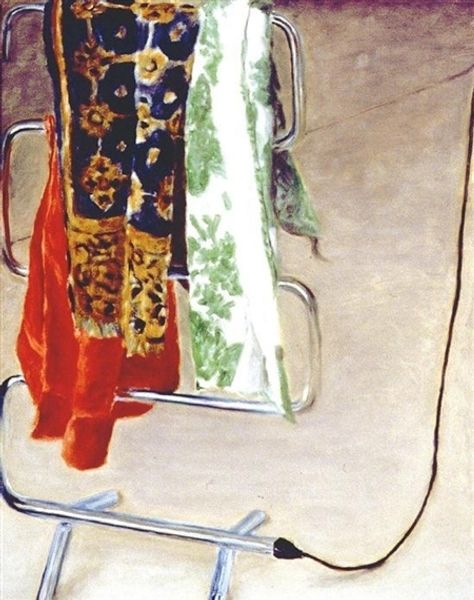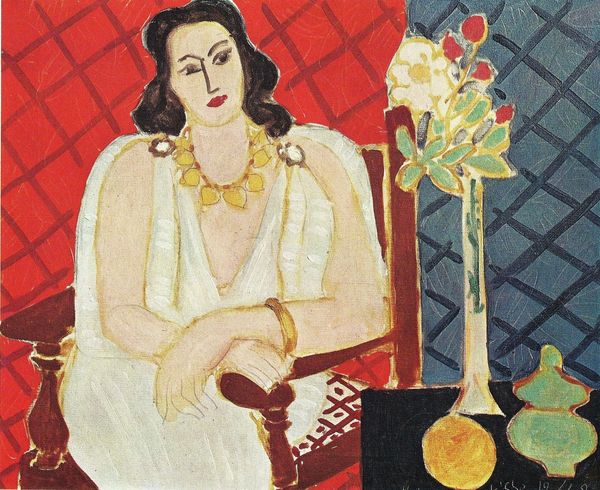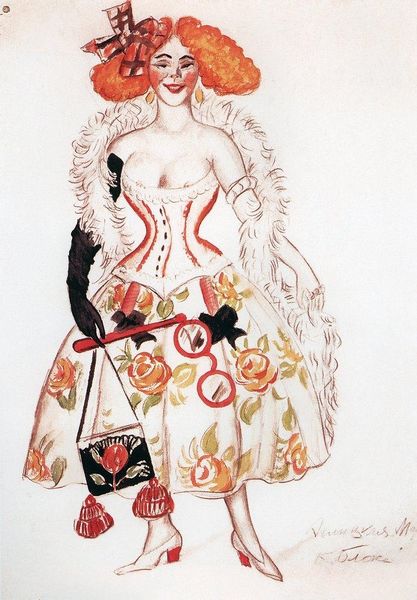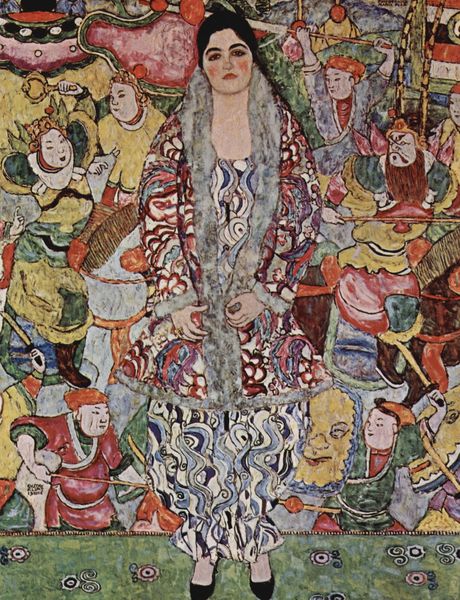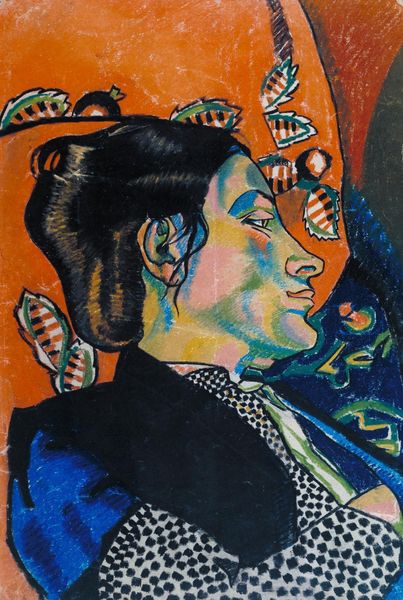
Copyright: Henri Matisse,Fair Use
Curator: Here we have Henri Matisse’s “Helen with a Precious Stone,” an oil on canvas completed in 1937. What strikes you about it? Editor: Immediately, it’s the intensity of the color that grabs me—the almost clashing reds, greens, and yellows shouldn’t work, yet they vibrate with life. The simplified forms and flattened perspective create a powerfully decorative effect. Curator: Indeed. Knowing the period—the late 1930s, with fascism rising across Europe—it's easy to view such an interior scene, with its privileged female subject adorned with finery, through a critical lens. What statement, if any, is Matisse making by portraying this domestic, decorative scene as political tensions flared across Europe? Editor: That's a compelling point, though perhaps he was finding solace, an escape into pure form and color, as a way to navigate that tumultuous historical moment? Look at how the patterns—the stripes on her dress, the decorative collar, the floral motif on the blouse, the background foliage—are treated as equally important as the figure, dissolving any traditional hierarchy of subject and ground. Curator: I appreciate your emphasis on its formal aspects, and I see his dedication to a language of painting over realism, but can we ignore the politics implicit in retreating to such insular themes at that historical juncture? Women were experiencing a different form of freedom at this time, becoming central to social and work movement--why this image of bourgeois class? Her jeweled accessory may symbolize how economic freedom has its restraints when viewed through a modern intersectional lens. Editor: The figure itself is a study in simplified volumes; a distillation of form rather than a detailed portrayal. It could speak to his formalist exploration beyond cultural considerations and more directly at issues of rendering shape and color, like his use of arabesques. Look how they repeat in the dress, in the line of her arm, the way they echo throughout the plants in the background; each one playing with shape. Curator: Perhaps there isn’t one right way to interpret it; as an exploration in style, an exercise in portraying identity through interior portraiture, or as an unintentional encapsulation of a conflicted time. Editor: In any case, the tension it creates, between representation and abstraction, chaos and control, is certainly its enduring power.
Comments
No comments
Be the first to comment and join the conversation on the ultimate creative platform.
